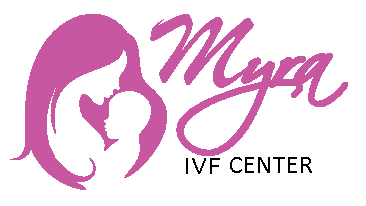Polycystic Ovary Syndrome, commonly known as PCOS, is a hormonal disorder affecting women of reproductive age. The condition results in irregular menstrual cycle accompanied by episodes of weight gain, acne, excessive hair growth, and infertility. Considered a lifestyle disorder by doctors, PCOS can be managed through medication and lifestyle changes. That said, if one doesn’t see any improvement in the symptoms, the doctor may suggest a surgical intervention.
One of the most effective procedures to treat PCOS when all the conservative treatment options fail is laparoscopic ovarian drilling.
What is Laparoscopy for PCOS?
A laparoscopic ovarian drilling or laparoscopy for PCOS is a minimally invasive surgical technique performed to treat hormonal imbalance and restore ovulation in women suffering from this condition. The procedure involves using a laparoscope—a thin tube with a camera and a light. The surgeon inserts this tube by making small incisions in the abdomen and uses heat or laser energy to reduce the number of cysts and lower androgen (male hormone) levels in the body. The results of this procedure promote regular ovulation.
Who Needs Laparoscopy for PCOS?
Your doctor may recommend this procedure if you have any of the following conditions:
- Medications such as letrozole or clomiphene have failed to induce ovulation.
- If you experience severe or resistant infertility due to your condition.
- If enlarged polycystic ovaries are causing severe pain and discomfort and affecting your quality of life.
- If you have opted for conservative treatments like medication, lifestyle modifications, and hormonal therapy, but they haven’t resulted in any outcomes.
- If you are planning to conceive but have not responded properly to other fertility treatments.
What are the Benefits of Laparoscopy for PCOS?
Restoration of Ovulation
Laparoscopic drilling for PCOS is considered a sought-after treatment to restore ovulation in women who have been struggling with this condition. The procedure creates tiny holes in the ovaries with the help of electrocautery or laser, thereby improving hormonal imbalances and increasing the chances of ovulation. All these practices facilitate natural conception.
Improved Fertility
The restoration of ovulation with the help of this procedure tends to enhance fertility in women. This procedure can also benefit women with PCOD.
Reduced Production of Androgen
PCOD is a condition characterized by high levels of androgens or male hormones in the body. With the help of ovarian drilling, the production of androgen, disrupting the ovarian tissue responsible for excess androgen production, is regulated.
Regulation of the Menstrual Cycle
For women with an irregular menstrual cycle, ovarian drilling can help regulate period by stimulating ovulation and restoring hormonal imbalance.
Decreased Use of Medicines
Although PCOS is a lifestyle condition, the doctor may put you on medication for the long term, which may lead to some side effects. Opting for laparoscopy for PCOS minimizes your reliance on medication.
How is Laparoscopy for PCOS Performed?
Before the Surgery
During your consultation, the surgeon takes a proper evaluation of your condition. They perform an ultrasound scan and run blood tests to check your hormone levels and overall fitness. You will be asked to fast for 6-8 hours before the procedure. Feel free to discuss any other queries with the surgeon before the procedure begins.
During the Surgery
Laparoscopy for PCOS is performed under general anesthesia, which keeps you calm and minimizes pain and discomfort throughout the procedure. The surgeon begins by making small incisions in the lower abdomen to let the laparoscope enter the body to visualize the internal organs. An ovarian drilling is performed using laser technology to kill cysts and androgens from your body. The entire procedure takes 30-45 minutes to complete.
After the Surgery
After the procedure, you will be taken to the recovery room where the care team will monitor you. Depending on your overall condition, you will either be asked to leave or stay overnight at the hospital. Once you are discharged, you can return to normal activities within a week. Follow the instructions of the surgeon related to medication and pain management for quick recovery.
Is Laparoscopy for PCOS a Safe Procedure?
Although laparoscopy for PCOS has a high success rate, there may be some risks involved in this procedure. Here are some disadvantages or risks of opting for this treatment.
- The results of this treatment are not better than those of first-line treatments for PCOS. Many patients have suggested that the results of laparoscopy are not permanent and the condition may recur if due care is not taken.
- Some patients may experience irregular ovulation and menstrual cycle after this procedure.
- As with all surgical procedures, ovarian drilling may cause risks such as bleeding and infection. In some cases, the patient may experience injury to the bladder, bowel, and blood vessels.
- The damage to these organs may, over time, cause risks to fertility and early menopause.
Takeaway
A laparoscopic surgery for PCOS is an effective treatment for women who do not respond to medications and wish to restore natural ovulation or improve their fertility. Whether to opt for it or not should be a consensus decision taken by you and your doctor. Make an informed decision after calculating its pros, cons, and your commitment to lifestyle modifications after the surgery.


